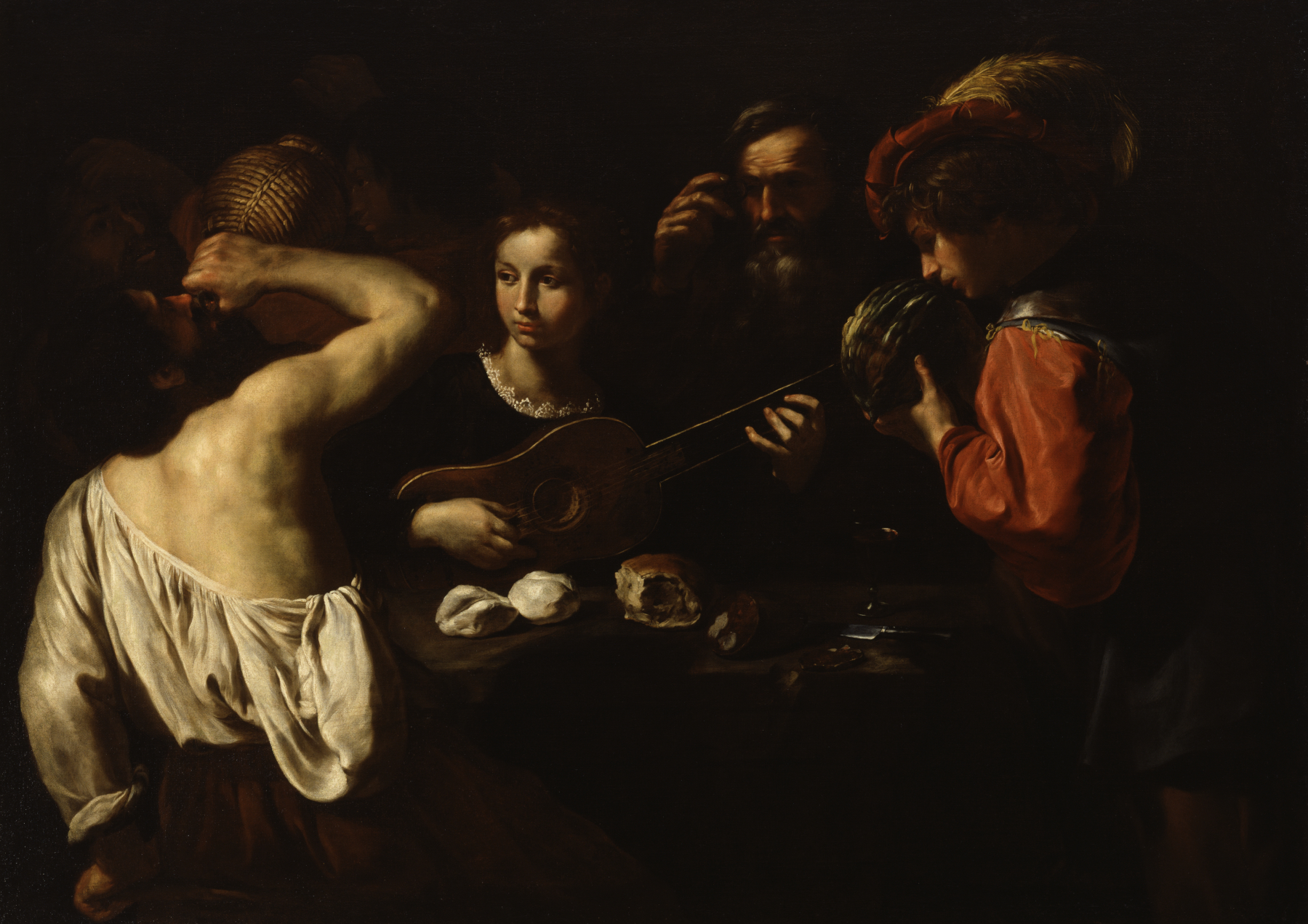Allegory of the Five Senses
(Baroque Europe )
At first glace, this is simply a scene in a darkened inn frequented by the poor and down-and-out. Embedding a classical allegory (a symbolic image) in such a subject makes it especially intriguing. Each person acts out one of the five senses: sound is represented by the woman with a lute, at center; taste, by the man emptying a flask of wine; smell, by the young man with a melon; sight, by the man on the right holding a pair of spectacles; and touch, by the two people who are fighting.
Paolini's allegory dates from his early years in Rome, where he studied the paintings of Caravaggio (1571-1610), known for their realism and strong chiaroscuro (modeling in light and shade).
Provenance
Provenance (from the French provenir, 'to come from/forth') is the chronology of the ownership, custody, or location of a historical object. Learn more about provenance at the Walters.
Philippe, duke of Orléans [d. 1723]; Louis Philippe Joseph, duke of Orléans, Philippe Egalité [d. 1793], by inheritance; Orléans Sale, Coxe, Burrell and Foster, London, February 14, 1800; Dr. Frank Lewarne, Cricklade, Wiltshire; Cricklade Town Hall, Wiltshire, October 1945, by gift; Private collection, London; Sale, Sotheby's, London, December 8, 1993; Mattiesen Fine Art Ltd., London; Walters Art Museum, 2003, by purchase.
Geographies
Italy (Place of Origin)
Measurements
49 1/4 x 68 1/8 in. (125.1 x 173 cm)
Credit Line
Museum purchase with funds generously provided by the Ben and Zelda Cohen Foundation and the W. Alton Jones Foundation Acquisition Fund, 2003
Location in Museum
Accession Number
In libraries, galleries, museums, and archives, an accession number is a unique identifier assigned to each object in the collection.
In libraries, galleries, museums, and archives, an accession number is a unique identifier assigned to each object in the collection.
37.2768


